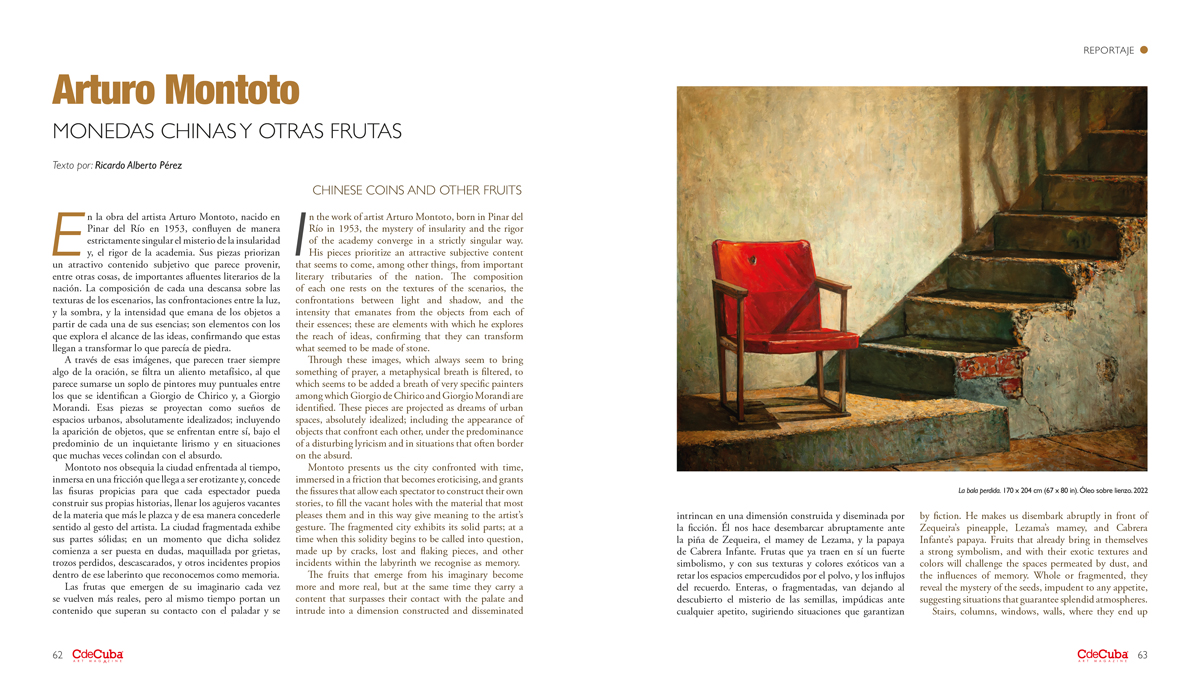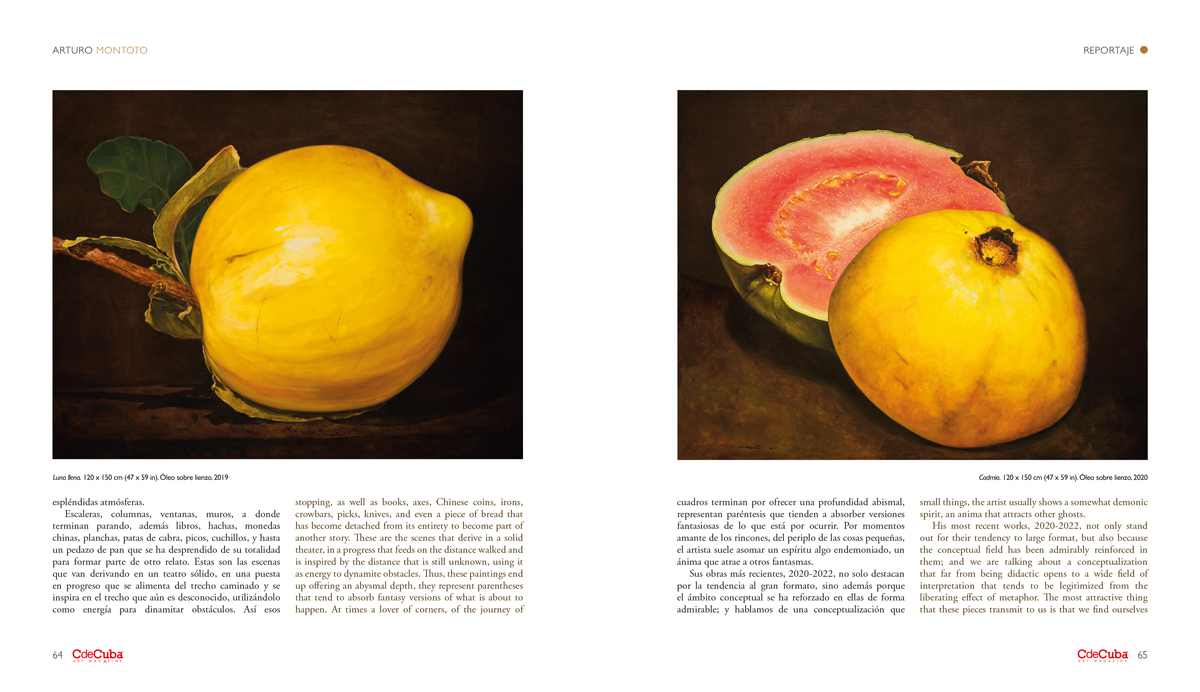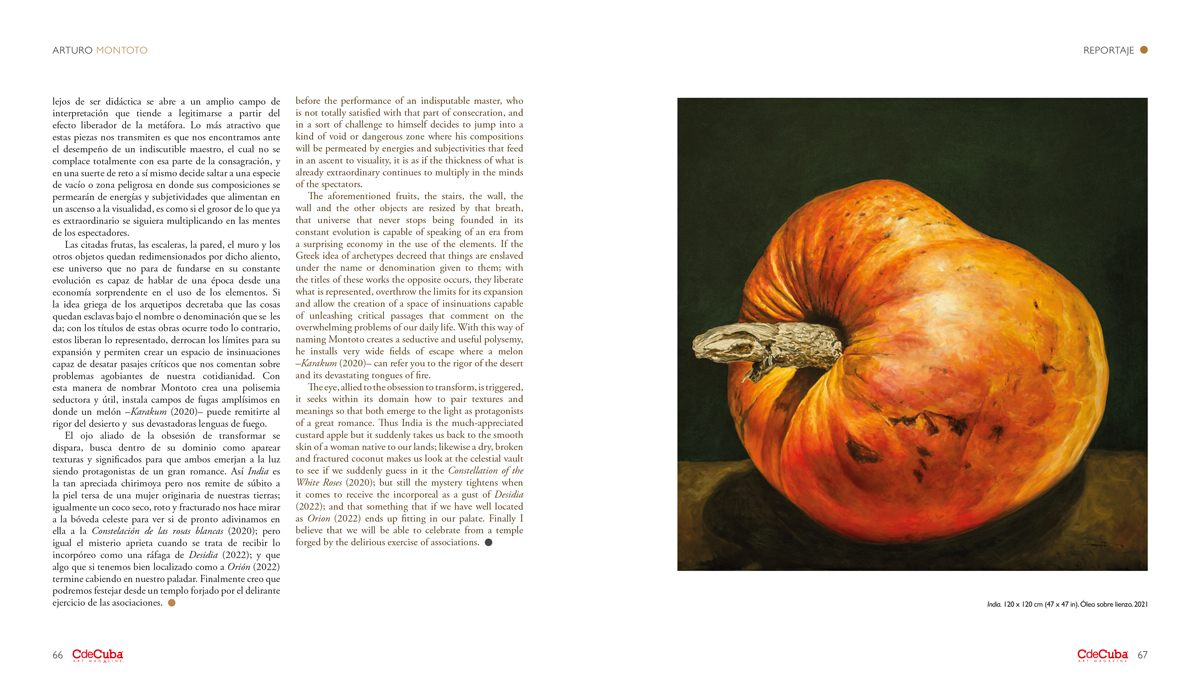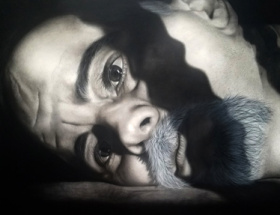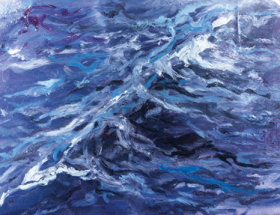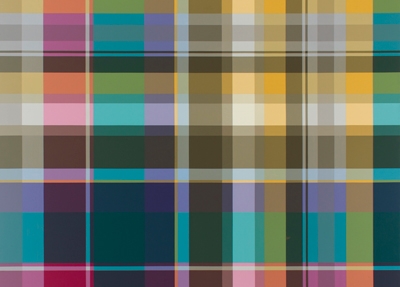Chinese Coins and Other Fruits
By Ricardo Alberto Pérez
In the work of artist Arturo Montoto, born in Pinar del Río in 1953, the mystery of insularity and the rigor of the academy converge in a strictly singular way. His pieces prioritize an attractive subjective content that seems to come, among other things, from important literary tributaries of the nation. The composition of each one rests on the textures of the scenarios, the confrontations between light and shadow, and the intensity that emanates from the objects from each of their essences; these are elements with which he explores the reach of ideas, confirming that they can transform what seemed to be made of stone.
Through these images, which always seem to bring something of prayer, a metaphysical breath is filtered, to which seems to be added a breath of very specific painters among which Giorgio de Chirico and Giorgio Morandi are identified. These pieces are projected as dreams of urban spaces, absolutely idealized; including the appearance of objects that confront each other, under the predominance of a disturbing lyricism and in situations that often border on the absurd.
Montoto presents us the city confronted with time, immersed in a friction that becomes eroticising, and grants the fissures that allow each spectator to construct their own stories, to fill the vacant holes with the material that most pleases them and in this way give meaning to the artist’s gesture. The fragmented city exhibits its solid parts; at a time when this solidity begins to be called into question, made up by cracks, lost and flaking pieces, and other incidents within the labyrinth we recognise as memory.
The fruits that emerge from his imaginary become more and more real, but at the same time they carry a content that surpasses their contact with the palate and intrude into a dimension constructed and disseminated by fiction. He makes us disembark abruptly in front of Zequeira’s pineapple, Lezama’s mamey, and Cabrera Infante’s papaya. Fruits that already bring in themselves a strong symbolism, and with their exotic textures and colors will challenge the spaces permeated by dust, and the influences of memory. Whole or fragmented, they reveal the mystery of the seeds, impudent to any appetite, suggesting situations that guarantee splendid atmospheres.
Stairs, columns, windows, walls, where they end up stopping, as well as books, axes, Chinese coins, irons, crowbars, picks, knives, and even a piece of bread that has become detached from its entirety to become part of another story. These are the scenes that derive in a solid theater, in a progress that feeds on the distance walked and is inspired by the distance that is still unknown, using it as energy to dynamite obstacles. Thus, these paintings end up offering an abysmal depth, they represent parentheses that tend to absorb fantasy versions of what is about to happen. At times a lover of corners, of the journey of small things, the artist usually shows a somewhat demonic spirit, an anima that attracts other ghosts.
His most recent works, 2020-2022, not only stand out for their tendency to large format, but also because the conceptual field has been admirably reinforced in them; and we are talking about a conceptualization that far from being didactic opens to a wide field of interpretation that tends to be legitimized from the liberating effect of metaphor. The most attractive thing that these pieces transmit to us is that we find ourselves before the performance of an indisputable master, who is not totally satisfied with that part of consecration, and in a sort of challenge to himself decides to jump into a kind of void or dangerous zone where his compositions will be permeated by energies and subjectivities that feed in an ascent to visuality, it is as if the thickness of what is already extraordinary continues to multiply in the minds of the spectators.
The aforementioned fruits, the stairs, the wall, the wall and the other objects are resized by that breath, that universe that never stops being founded in its constant evolution is capable of speaking of an era from a surprising economy in the use of the elements. If the Greek idea of archetypes decreed that things are enslaved under the name or denomination given to them; with the titles of these works the opposite occurs, they liberate what is represented, overthrow the limits for its expansion and allow the creation of a space of insinuations capable of unleashing critical passages that comment on the overwhelming problems of our daily life. With this way of naming Montoto creates a seductive and useful polysemy, he installs very wide fields of escape where a melon –Karakum (2020)– can refer you to the rigor of the desert and its devastating tongues of fire.
The eye, allied to the obsession to transform, is triggered, it seeks within its domain how to pair textures and meanings so that both emerge to the light as protagonists of a great romance. Thus India is the much-appreciated custard apple but it suddenly takes us back to the smooth skin of a woman native to our lands; likewise a dry, broken and fractured coconut makes us look at the celestial vault to see if we suddenly guess in it the Constellation of the White Roses (2020); but still the mystery tightens when it comes to receive the incorporeal as a gust of Desidia (2022); and that something that if we have well located as Orion (2022) ends up fitting in our palate. Finally I believe that we will be able to celebrate from a temple forged by the delirious exercise of associations.
